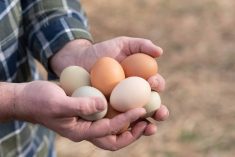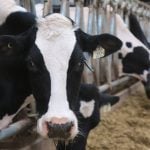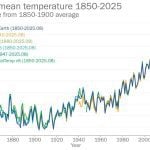It’s been about a year and a half since the COVID-19 pandemic and the restrictions aimed to contain it caused what Aaron Goertzen calls the “deepest and fastest recession in modern economic history.” Goertzen is the senior economist and director of BMO Financial Group.
Fortunately, we’re now in the recovery phase. “The labour market has strengthened, economic activity has increased significantly and financial markets are flashing signs of optimism,” he says.
On August 26, Goertzen took stock of the current macroeconomic landscape in Canada, outlining the implications of the economic environment and the economic outlook for Canadian producers at Ag in Motion Discovery Plus, a free virtual farm expo found online at aginmotion.ca. And there’s lots of good news I’d like to share with you from his presentation called, “Agriculture 2021: What now, what next?”
Read Also

Editor’s Rant: Resistance is not futile
A recounting of errors from the September 2025 print editions of Grainews, details of which are painful to the editor.
First off, due to widespread vaccinations, the increase in COVID-19 cases is not creating the same health consequences it was last year and early this year, Goertzen says. Therefore, it’s not likely we’ll need to return to the restrictive lockdown measures that were so economically damaging.
“We aren’t out of the woods yet, but at this point, it does appear most likely that the economic recovery will remain intact,” he says.
Demand, prices and labour
The world economy is primed for its strongest growth performance “probably on record.” Goertzen expects global GDP to increase by almost six per cent this year and five next year, bringing the world economy back to capacity late in 2022. He sees world GDP as an important demand indicator for agriculture, and the stronger economic environment is a “clear positive” for agricultural prices across the board.
In the United States, economic activity surpassed pre-pandemic levels in Q2 this year and Canada should regain pre-pandemic output levels in Q3, says Goertzen. However, recovery has been uneven across industries with travel, entertainment and food services not as robust as other sectors.
The expected overall growth of around six per cent in both Canada and the United States this year has been supported by government programs to bridge the economy during the pandemic, highly stimulative monetary policy, low interest rates and pent-up demand for services, says Goertzen.
Agriculture was one of the few industries to post GDP growth last year in Canada, Goertzen adds, at almost eight per cent.
In Canada, the unemployment rate has improved by eight points since May 2020 and this July was at seven per cent. We’re not at the pre-pandemic unemployment rate yet (it’s still two points higher) but conditions have improved. And Goertzen suggests the Canadian labour market is at what he calls “a sweet spot” for agricultural producers.
“The economy is performing well enough that demand for food, for agricultural products, is relatively strong,” he says, “On the other hand, there is still some slack in the labour market, and that’s helping to prevent some of the labour availability challenges that have been faced by the ag sector before the coronavirus emerged.”
Savings, markets, input costs
Due to a surge in household savings since the beginning of the pandemic, Canadian households have accumulated more than $200 billion in excess savings. What does this mean for agriculture? An “incremental positive” for agricultural demand and for pricing, says Goertzen.
“The direct impact in agriculture is probably a moderate positive overall — still a positive, though. And I do think it’s realistic to expect that would be some consumers will trade up as a result of this to, say, more higher value-added agricultural products.”
Financial markets are also looking good. Major equity indexes have rebounded to new highs and the corporate bond market has also healed with credit risk spreads, which indicates the market has strong faith in corporate credit quality and commodity prices in general, says Goertzen. Also, the Bank of Canada’s commodity price index is far above pre-pandemic levels.
For producers, this means higher input costs this year, as well as an increase in oil prices and “to a lesser extent, potentially fertilizers, pesticides and structures.” However, crop and livestock prices have benefitted from stronger investor confidence and the same broad market rally, which could offset the cost pressures suggested by higher commodities, he adds.
The loonie, supply challenges, inflation
The loonie has recovered substantially from a low last year of US$0.69 to around US$0.78 today. Although a stronger loonie works against the Canadian ag sector, stronger benchmark pricing for crops in U.S. dollars has “easily offset the appreciation of the loonie over the past year,” says Goertzen. “And the loonie is still below what we would estimate as longer term fair value.”
Will the loonie climb higher? Goertzen says he expects the Canadian dollar to gain a little more ground, perhaps to the low eighties, though “it’s not likely to appreciate to the point of becoming a major challenge for Canadian farmers in the ways it has in some periods of the past.”
As good as this economic outlook is so far, there will be challenges. For example, supply challenges are beginning to act as a “headwind to recovery.” We’ve all heard about the global microchip shortage, also ports are backlogged in some countries and manufacturers are having issues getting inputs for production they need — and paying more for them. “Industrial production has more or less stalled over the past few months, and that’s despite very strong demand growth,” says Goertzen.
How could this affect producers? It might mean more trouble getting the inputs you need including machinery and equipment, and you could be paying more for them. Supply chain challenges are also affecting inflation.
U.S. headline inflation is currently 5.4 per cent year over year and headline inflation in Canada is 3.7 per cent year over year (headline inflation is the raw inflation figure reported through the Consumer Price Index). Ultimately, Goertzen says inflationary pressures will ease as “supply chain kinks are worked out as pent-up demand begins to exhaust itself a little bit.” He also expects inflation to remain above the two per cent target through to the end of next year.
How this will affect agriculture will depend on how the Bank of Canada responds to greater inflation. “As far as the Bank of Canada goes, it is still insistent that today’s above-target inflation will be transitory, but we think that line is going to become harder to sell over time. How long exactly is transitory?” says Goertzen.
“By the time we get to late next year, and when the economy is back roughly at capacity, we do expect the Bank of Canada will have to begin raising its policy interest rate if it wants to maintain credibility in its two per cent inflation target.”
Since farming is a capital-intensive business, this could directly affect farmers’ profitability as financing costs rise in the future.
“The take-away here is even though interest rates could and probably should still stay historically low for the very near future, they won’t stay that way forever. It is important for producers to look ahead and see what that could mean for their operations and for their finances.”
I remember at this time last year feeling like the bad news was never going to end. I did not anticipate even early this spring such a positive outlook for our economic recovery, yet, happily, here we are. Yes, there will still be challenges ahead, but there’s also loads of optimism.
Have a safe and happy autumn,
Kari
















